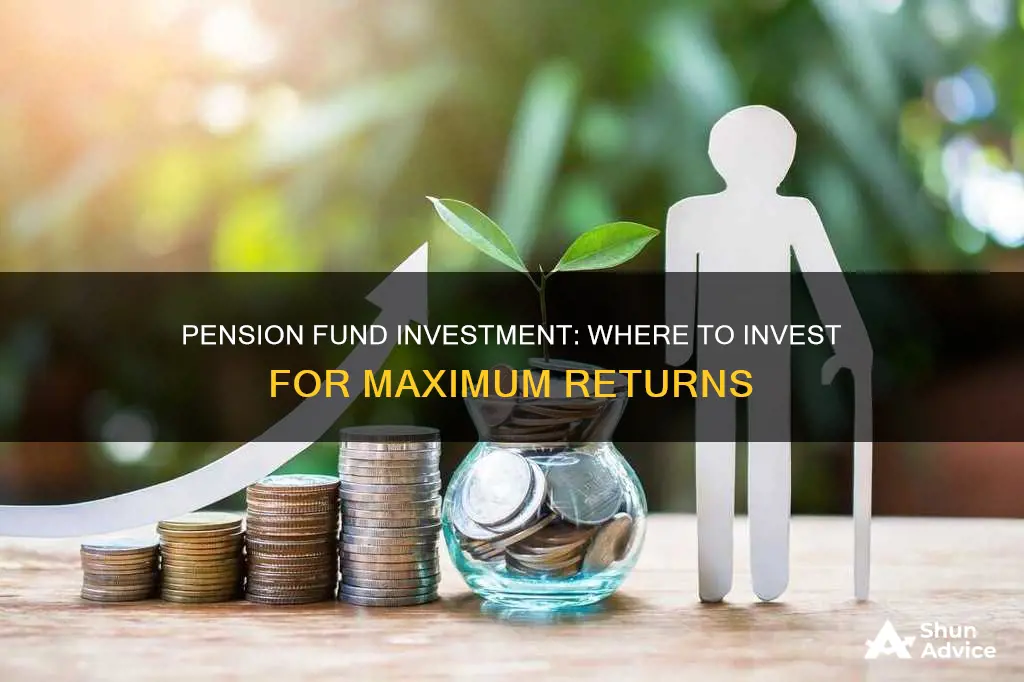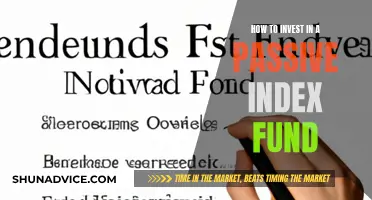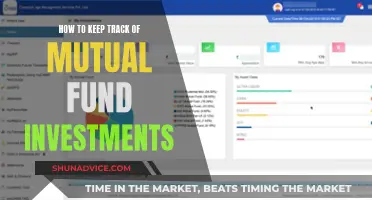
Pension funds are a form of long-term savings that can be accessed in later life when you want to work less or retire. They are typically made up of a portfolio of assets, including stocks, shares, bonds, cash and commercial property. Pension funds are usually managed by companies (employers) and aim to ensure there is enough money to cover the pensions of employees after their retirement.
There are different types of pension funds, including workplace pensions, personal pensions and SIPPs (self-invested personal pensions). Workplace pensions are either defined contribution schemes or defined benefit schemes. Defined contribution schemes are the most common type of workplace pension, where the pension pot will pay a retirement income based on how much you and/or your employer contribute and how much this grows. Defined benefit schemes, also known as 'final salary schemes', are less common but still widely used in the public sector.
When it comes to choosing a pension fund, it's important to understand how and where your pension fund is being invested by your pension provider. This will depend on the type of pension you have and your individual circumstances. For example, you may be able to choose a default investment fund or select an investment fund yourself. It's recommended to seek independent financial advice to help you decide which pension fund is best for you.
What You'll Learn

Stocks and shares
Historically, pension funds invested primarily in stocks and bonds, often using a liability-matching strategy. However, changing market conditions and the need to maintain a high rate of return have led to a shift in investment strategies. Today, pension funds invest in a wider variety of asset classes, including private equity, real estate, infrastructure, and securities like gold.
Despite this shift, stocks and shares remain an important investment option for pension funds. They can provide higher returns than more conservative, fixed-income instruments. Additionally, equity investments in blue-chip common and preferred stocks are a major investment class for pension funds.
When investing in stocks and shares, pension fund managers may focus on specific geographical areas or sectors. They may also consider the risk profile of the investment and choose higher-risk or lower-risk options depending on the investor's risk tolerance and the time horizon until retirement.
It is worth noting that investing in stocks and shares carries a certain level of risk. The value of stocks and shares can fluctuate, and there is always the possibility of losing money. Therefore, it is important for investors to carefully consider their investment options and seek financial advice if needed.
Singapore's Sovereign Wealth: Where Does the City-State Invest?
You may want to see also

Bonds
Bondholders are ahead of shareholders in getting their money back if a company goes into liquidation, although this might not always be the case if you are investing through a fund.
Historically, bonds have been less volatile than equities, but there are no guarantees. The most risky types of bonds (long-term and high-yield) can be as or even more volatile than some equities.
Some of the risks associated with bonds include:
- Interest rates: Typically, when interest rates are low, bond prices are high, and vice versa.
- Inflation: When the cost of everyday items goes up, it can mean that the interest payments won't be worth as much, making the prices of bonds tend to go down.
- Supply and demand: If there is a sudden rise in the number of companies or governments that need to borrow money, there will be more bonds for investors to choose from, and prices are likely to go down.
- Credit risk: If the credit rating of a bond falls, there will be more sellers, pushing prices down.
Bond of America: State Investment Destinations
You may want to see also

Commercial property
There are a few ways in which an individual could purchase commercial property as a pension fund investment. For example, a business owner could use their pension fund to purchase the commercial property that their business operates out of, or an individual could use their pension fund to purchase a property with which they have no connection. It is also possible for several people, such as business owners or family members, to pool their pension funds together to purchase property.
When purchasing commercial property as a pension fund investment, it is important to consider the location of the property, the financial position of the tenant, and the sector in which the tenant operates. It is also worth noting that valuations of commercial property can go up and down and are influenced by many factors, particularly the supply and demand for property.
Additionally, there are costs associated with buying and owning commercial property, such as solicitor fees, professional property valuation, financial adviser fees, pension trustee administration costs, and Land and Buildings Transaction Tax, depending on the cost of the property. There are also ongoing costs to consider, such as insurance and repairs.
Overall, investing in commercial property through a pension fund can be a viable option for individuals looking to grow their pension funds, particularly for business owners who can benefit from the tax advantages and regular rental income. However, it is important to carefully consider the potential risks and seek financial advice before making any investment decisions.
ETFs and Mutual Funds: Key Investment Considerations
You may want to see also

Private equity
The main perceived benefit of investing in private companies is the improved ability to diversify. Pension funds can spread their investments across a wider range of regions, industries, and sectors, including privately held companies not listed on stock exchanges. This strategy also allows funds to access a broader selection of companies and early-stage industries.
Another advantage of private equity investments is the potential for superior risk-adjusted returns over long periods, typically 8 to 10 years. This makes private equity an attractive option for pension funds seeking to maximise returns while minimising risk.
However, one drawback of investing in private companies is the lack of liquidity. Private equity investments often require long holding periods, which may not align with the investment goals of all pension funds.
Pension investment in private equity originated in the United States and Canada in the late 1970s, during a period of high inflation and underperformance in listed equity markets. Large institutional investors began to diversify into "non-traditional" asset classes, such as private equity and real estate. The trend towards increased allocation to private equity, including venture capital, gained momentum after 2009-2010, as financial experts predicted that the Great Recession would lead to a prolonged era of low-interest rates.
Today, pension funds are one of the largest sources of capital for the private equity industry. By investing in private equity, pension funds can access a diverse range of investment opportunities and potentially generate substantial returns for their beneficiaries.
Index Funds: Utopia or Dystopia for Investors?
You may want to see also

Real estate investment trusts (REITs)
REITs invest in a wide range of property sectors, including apartment buildings, cell towers, data centres, hotels, medical facilities, offices, retail centres, and warehouses. They tend to specialise in specific real estate sectors, like commercial properties, but many hold diversified portfolios of many kinds of properties.
REITs are an attractive option for pension funds as they are typically passive investments. They are also highly liquid, unlike traditional real estate investments, as most are publicly traded like stocks. A minority of REITs are private funds, whose shares are only eligible for accredited investors.
REITs can be a good way to balance a pension portfolio as they can serve as a hedge against inflation and have historically delivered competitive long-term returns. They also offer diversification benefits because they tend to follow the real estate cycle, which typically lasts a decade or more, whereas bond and stock market cycles tend to last an average of 5.75 years.
However, there are some risks to investing in REITs. Real estate is sensitive to changes in interest rates, which can affect property values and occupancy demand. REITs must also maintain certain occupancy levels to maintain expected payouts, and lower rents and occupancy rates may negatively impact them.
There are two main types of REITs: equity and mortgage. Equity REITs own and manage properties and collect payments from tenants, while mortgage REITs invest in mortgages and derive their income from interest payments.
Vanguard Funds: Where to Invest and Why
You may want to see also
Frequently asked questions
A pension fund is a long-term, tax-efficient savings plan that you can access in later life when you want to work less or retire. Pension funds are made up of a portfolio of assets in which your pension contributions are invested, such as stocks, shares, bonds, cash and commercial property.
Workplace pensions come in two types: defined contribution schemes and defined benefit schemes. Defined contribution schemes are the most common type of workplace pension today, while defined benefit schemes, also known as 'final salary schemes', are less common but still widely used in the public sector.
The main investment options include company shares, property and bonds. These might be in the UK or overseas. Other options include private equity, real estate, infrastructure, and securities like gold that can hedge inflation.
You should consider what you want your money to achieve, how long you are investing for, and what level of investment risk you are comfortable with.







